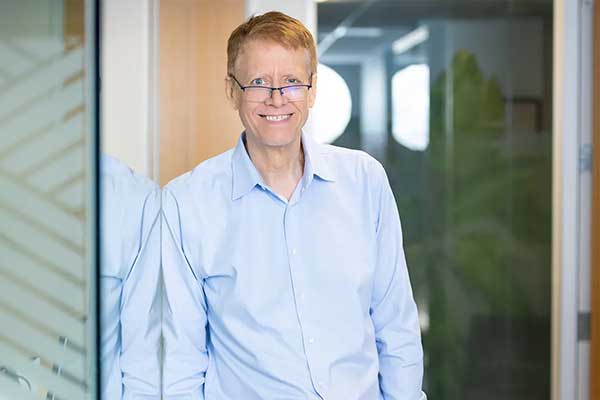Club Brings Together Students Interested in AI

MGEN Adjunct Faculty David de Hilster created the NL Blockchain Club to give students the opportunity to design and build an AI ecosystem using blockchain and a programming language called NLP++.
This article originally appeared on Northeastern Global News. It was published by Cesareo Contreras. Main photo: David de Hilster, a Northeastern University engineering professor, will lead the NLP blockchain project. Photo by Kelly Gavin.
Northeastern professor using blockchain to build better human-inspired AI systems
This fall, students at Northeastern University’s Miami campus will have the opportunity to join a new club with an ambitious mission: to design and build decentralized AI systems using the blockchain and a programming language called NLP++.
The club — open to all students — is being launched by David de Hilster, an engineering professor and longtime computer language developer. It will serve as a collaborative hub for students interested in AI, language, and distributed systems, and will be tasked with creating the foundational framework to integrate de Hilster’s logic-based programming language into the blockchain.
The hope is to create an AI ecosystem driven not by statistical guesswork, but by logic, rules, and transparency, he says.
“The goal is to create an open, decentralized ecosystem for developing, maintaining and using linguistic resources — for every human language and topic domain,” de Hilster says. “Without the blockchain, NLP++ is a standalone programming language. With the blockchain, NLP++ becomes replete with dictionaries, knowledge and algorithms that perform at human level and in a trustworthy manner.”
A product of the modern web, a blockchain is a decentralized and distributed ledger that stores records of transactions across a cluster of computer systems. Cryptocurrencies such as bitcoin and Ethereum are built on the blockchain.
Twenty-five years ago, de Hilster set out to develop a method for computers to analyze and interpret text the same way that humans think. The result was Natural Language Processing ++, or NLP++, a computer programming language he co-developed.
Read full story at Northeastern Global News